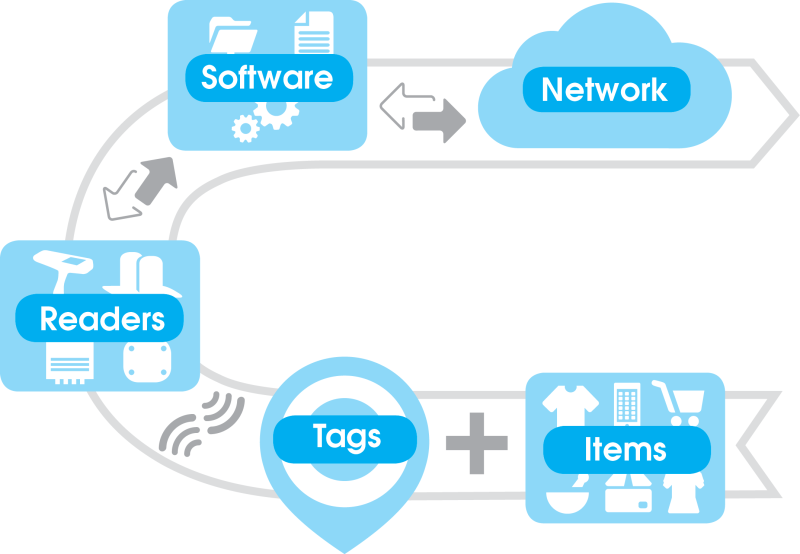Overview
As defined on the RAIN RFID website, RAIN RFID is 'a wireless technology that connects billions of everyday items to the internet, enabling businesses and consumers to identify, locate, authenticate, and engage each item. RAIN technology is based on a UHF RFID protocol standard developed by GS1 and ISO. This wiki is written as a primer and introduction to the technology for developers that are going to write software and build applications around RAIN RFID.

When using RAIN RFID, items are equipped with RFID tags (which are either attached or embedded). RFID readers are able to 'read' those tags, over both a short or long range (up to 10 meters). The tags store information on the object they are attached too, but can also optionally house embedded sensors (like humidity or temperature sensors). The reader is able to extract this information for thousands of tags at a time, even without 'seeing' the tags. A software application processes the data from the reader, stores it and can use it to engage in other actions - over a local or global network. The data contents on the tag can be modified by a reader as well.
Reading the tag
The communication between the reader and the tags is done according to the Air Interface Protocol. This protocol defines how the communication takes place, and is documented in the GS1 UHF Gen2 protocol which ISO/IEC has standardized as 18000-63. You can find the full standard here.
When a reader (with an antenna, more on that later) is going to read tags, it is going to do a so-called inventory, which is the basic building block for reading RFID labels. An inventory means that the reader will transmit a command, and the labels in the field will respond to that. With RAIN RFID, the reader always talks first and is in control over what is happening.
The reader is able to read up to 1000 tags per second, at a distance of up to 10 meters. This allows all kinds of great applications, for example automatically read the contents of incoming shipments or determine the location of items across a large building.
One of the main challenges with RAIN RFID is to make sure that you read the tags you want to read, in a reliable way. There two main points that influence this:
- Protocol There are some trade offs in the communication protocol between raw throughput, the number of tags you can read and how often you read them.
- Physics The signal from the reader should be able to reach the tags, and the response from the tags should be able to reach the reader.
If you are going to develop a software application around RAIN RFID, it will be key to understand those points, as they will have a large influence on the reliability of your application.
Updated 7 months ago